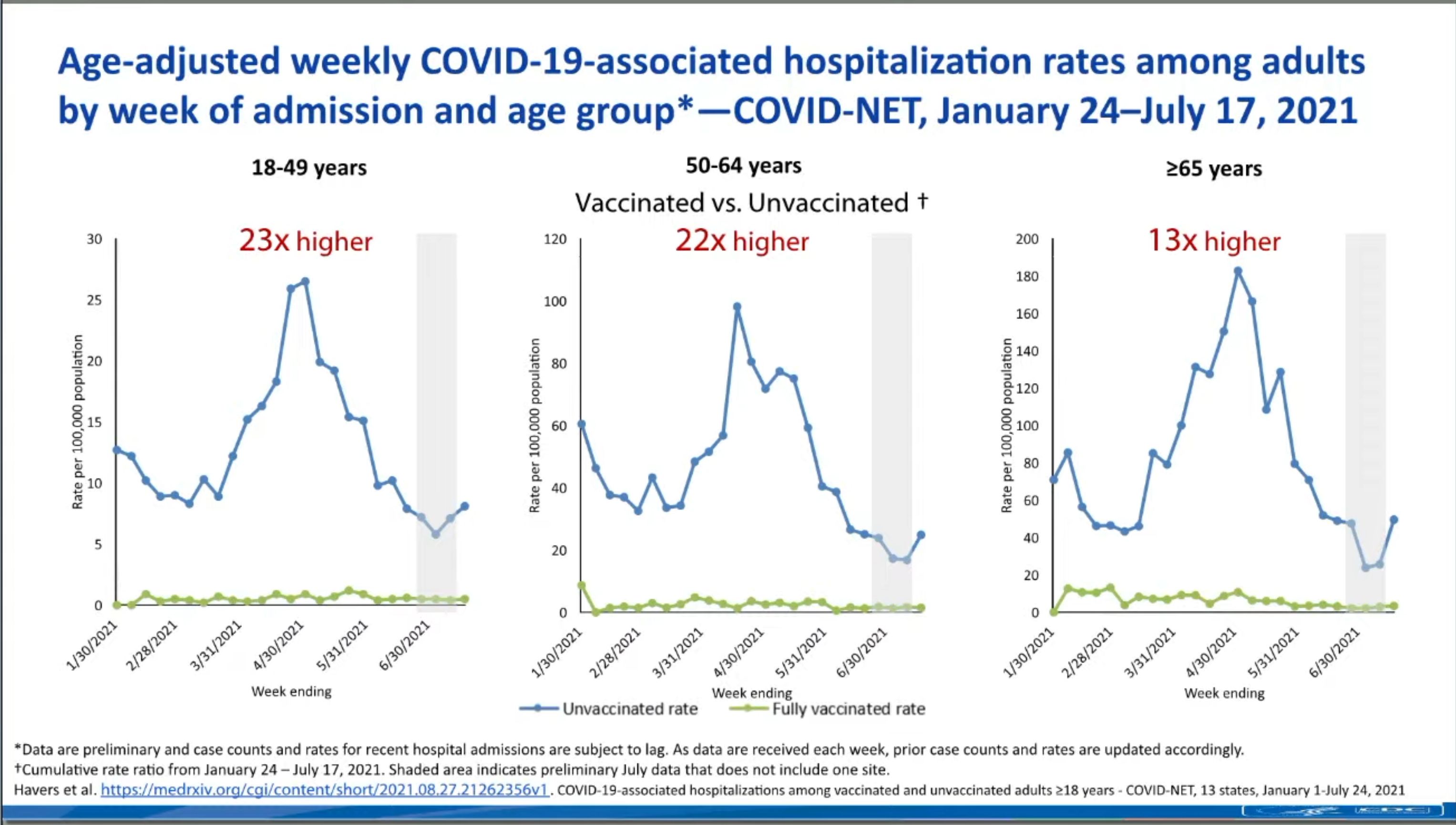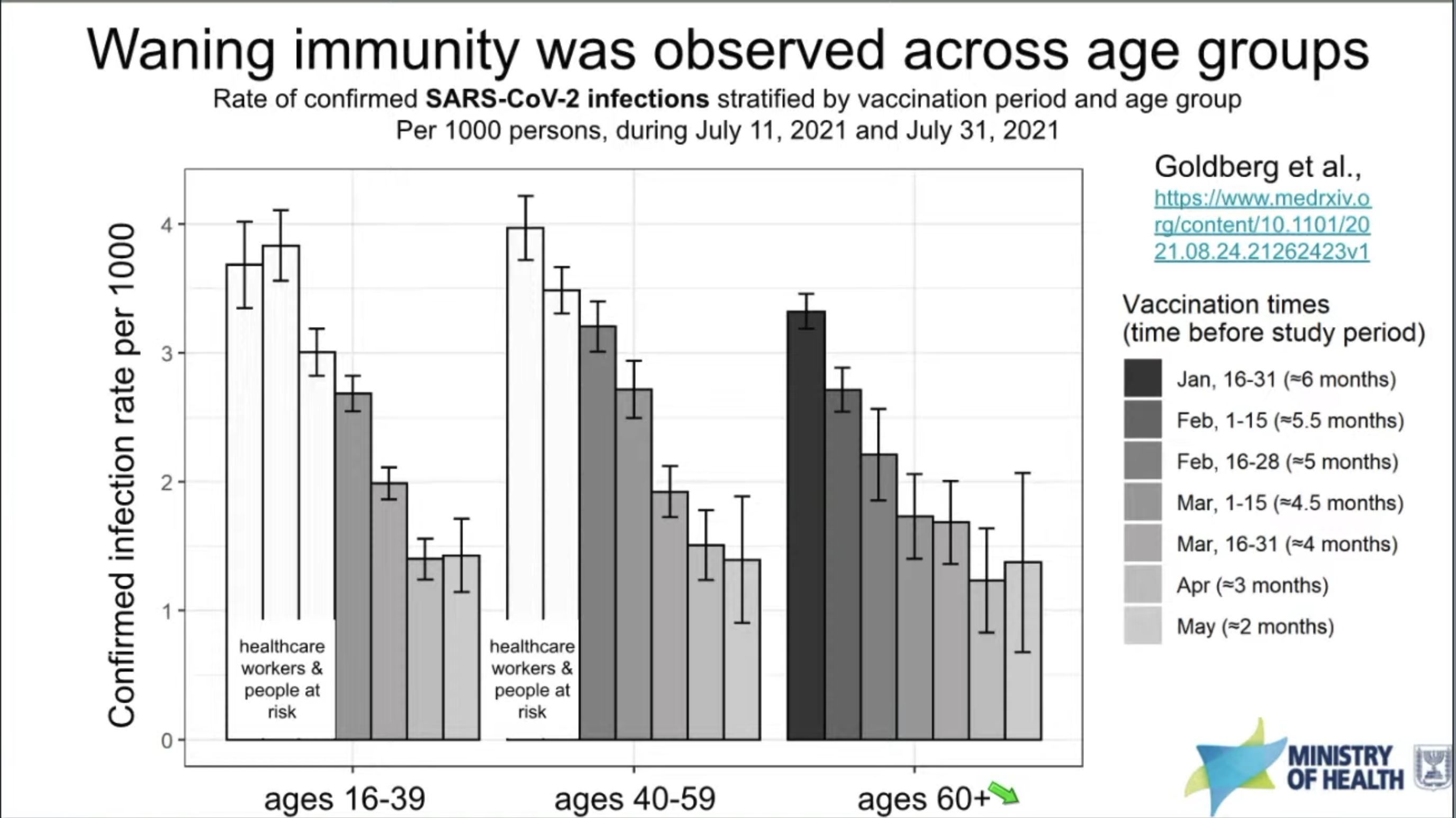FDA Panel Sidesteps Decision for Broad Distribution of Booster Shots
Some medical experts say that in this case, inaction is also an action—either the US gives boosters or does not. That decision needs to be based on the best available evidence. Instead, there seems to be a desire to wait another 6 months for pristine randomized controlled studies.
Those who had hoped for a full course meal of an endorsement of COVID-19 booster shot availability in the United States resulting from a daylong discussion by an advisory committee to the Food and Drug Administration (FDA) were instead handed a small snack.
The FDA’s Vaccines and Related Biologic Products Advisory Committee (VRBPAC) yesterday declined to approve Pfizer boosters for those 16 years of age or older—despite a preponderance of testimony backing that move—but did approve Pfizer boosters 6 months after full vaccination for those who are 65 years of age or older, along with other individuals who are at risk for severe COVID-19 under the FDA’s emergency use authorization (EAU).
But then at the end of the meeting some committee members expressed second thoughts about their highly restrictive recommendation. There was a discussion regarding health care workers, and agreement that they should be included in the recommendation. There was then agreement that other frontline workers should also be included. But those who were at significant risk of COVID-19 exposure in a non-occupational setting were not to be included. An informal poll was then taken regarding the support for boosters in health care and other frontline workers for the Pfizer vaccine. The poll passed unanimously.
It wasn't clear why that decision was made. In addition, if exposure indeed is a major variable to obtaining a booster—some would argue that the initial question about far-reaching availability of booster shots should perhaps be readdressed.
The bottom line: The committee discussion provided valuable information, but the panel decided against a sweeping strategy. It instead settled on recommending the boosters for those 65 and older and others at risk for severe COVID-19. In the end, the committee punted to next week’s meeting of the Advisory Committee on Immunization Practices (ACIP), an advisory committee of the Centers for Disease Control and Prevention (CDC).
The meeting occurred as the delta variant has reignited the pandemic with a vengeance. There are 145,000 cases per day and the death rate from COVID-19 has a 7-day moving average of 1,300 deaths per day. At the same time, there are reports out of Israel on the waning of the Pfizer vaccine. Some medical experts say that action is needed. In this case, inaction is also an action—either the United States gives boosters or does not. Many medical experts say that that decision needs to be based on the best available evidence. Instead, there seems to be a desire to wait another 6 months for pristine randomized controlled studies.
COVID-19 vaccines have had a tremendous effect on the prevention of hospitalizations and deaths as illustrated in the below graph on hospitalizations in unvaccinated and vaccinated individuals.
Source: Centers for Disease Control and Prevention

Infection Control Today® was one of the first to publish the Israeli data on severe breakthrough infections in the elderly who are more than 5 months post full vaccination with the Pfizer vaccine. In this cohort there was an 8.6% incidence of hospitalizations and 2% incidence of death with delta variant breakthrough infections. Data from Qatar also showed a decline in vaccine effectiveness in those who are over age 60 and after 25 weeks post full vaccination.
During the FDA meeting the data from Israel was center stage. On July 30, 2021, Israel started to administer Pfizer vaccine boosters to those over the age of 60 and who have received their second vaccine dosage more than 5 months earlier. Recent data published from Israel in the New England Journal of Medicine demonstrated that a Pfizer booster administered to those greater than 60 years of age and at least 5 months post full vaccination, lowered reinfections by 11.3% and severe illness by 19.5%. Preliminary results presented at the FDA meeting reported that boosters also created a 10-fold protection from infections in ages 40 to 59.
Sharon Alroy-Preis, MD, MPH, MBA, Israel’s Director of Public Health Services, reported that in July and early August there was a greater than 10-fold increase in severe cases, and 60% of these were in fully vaccinated individuals. She stressed that the trend in vaccine waning was also seen in the 40 to 60 year-old age groups who were fully vaccinated and that the problem of long COVID in young people supports the vaccination of the entire population.

Donna Boyce from Pfizer presented confirmatory data which showed vaccine efficacy waning 6 to 8 months after the second dose, and a study from Kaiser Permanente suggested the decrease in efficacy is from waning of the immunological response and not from the immune-escape properties of the delta variant.
Some questioned the results because the United States is not currently seeing a high hospitalization rate from breakthrough infections that Israel is seeing. In the Q&A period, Ron Milo, PhD, of Princeton University, stressed that this may be because Israel vaccinated the elderly very early, and patients were 5 to 6 months out from full vaccination. The elderly is the cohort most impacted with breakthrough cases resulting in severe infections and deaths. In addition, Israel solely used the Pfizer/BioNTech vaccine which may have less durability than the Moderna vaccine.
During deliberations it was pointed out by several committee members that ideally a booster could be tailored to the Delta variant using mRNA technology. In addition, there was concern that the increase in immune response, which was greater than the second dose, may also increase the risk of myocarditis in young males. Alroy-Preis stated that risks of myocarditis from COVID-19 was greater than that from vaccination, and that 95% of cases were not severe.
Several public commenters, focused on the need for Third World countries to receive the vaccine which would help prevent the emergence of variants in Third World countries. It should be remembered that the distribution requirements for mRNA vaccines require ultra-cold storage and may require three doses; will be formidable in Third World countries. In addition, partially vaccinated individuals in the United States may be even a higher risk for the production of mutations if they become infected with the virus.
In the Q&A, it was pointed out by a researcher from Germany that they were not able to determine an antibody titer which denotes adequate protection from SARS-CoV-2 illness. This revelation is of utmost importance in the current debate in the United States regarding “natural immunity.” The wide range of infection severity produced by SARS-CoV-2 will cause a wide-spectrum of immune responses and it is not yet possible to test and determine who has adequate protection and who does not.
The committee expressed support for a booster for those who are over the age of 60 who are 6 to 8 months post vaccination, but there were concerns over myocarditis and other risks in young patients. The post vaccination risk of myocarditis which most commonly occurs in males less than 30 years of age (peak 16 to 17 years) is between 1 in 5,000 to 1 in 6,000. It was felt that even larger studies would not detect this rare occurrence, only diligent vaccine follow-up.
The recommendation to vaccinate all individuals, not just the elderly, was not only driven by the desire to prevent disease but also by the desire to eliminate transmission, along with long COVID and resultant chronic disability.
Another issue was that it may be more beneficial to focus on efforts on administering vaccine doses to those who have not received the vaccine rather than on giving boosters. However, since March of 2021, 15 million doses of the vaccine have been discarded in the United States. Most agree this is a huge waste and these doses need to be placed in arms, even if boosters are given over primary vaccinations. Some leaders in the United States are already taking action. On September 8, 2021, Governor Larry Hogan of Maryland declared anyone over the age of 65 as being immunocompromised, and are now eligible for boosters.
Moderna vaccine boosters were not addressed. The Moderna vaccine contains over three times the amount of mRNA as the Pfizer/BioNTech vaccine and the data from Mayo Clinic has shown less degradation in vaccine efficacy. From January to July, the Pfizer vaccine was observed to decrease its effectiveness in preventing infections by 42%, the Moderna by only 72%. There are little data available on waning efficacy for the Johnson and Johnson vaccine.
Newsletter
Stay prepared and protected with Infection Control Today's newsletter, delivering essential updates, best practices, and expert insights for infection preventionists.